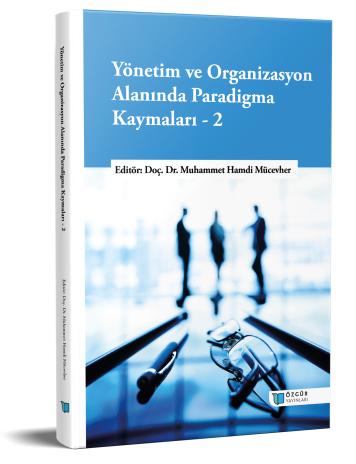
Paradigm Shifts in Management and Organization - 2
Synopsis
Modern organizations have to constantly review and rebuild their managerial paradigms together with rapidly changing environmental conditions, digitalization, generation differences, flexible working styles and human-centered governance approaches. Based on this necessity, this work titled “Paradigm Shifts in Management and Organization – 2” has been designed as the second volume focusing on current changes in the application areas of organizations, human-centered approaches, structural flexibility and managerial innovations.
In this volume; multi-dimensional transformation areas such as increasing employee satisfaction, organizational commitment, learning organizations, collective leadership, knowledge-intensive working styles, agile organizations and professional governance are addressed based on theoretical foundations. In addition, how the transition from classical management to post-modern, complex and systemic thinking structures is shaped is analyzed with original contributions.
The chapters in the second volume address new paradigm shifts that indicate the rise of human-centered management approach and organizational flexibility. In this context, the transition from the understanding that sees human resources as limited to hiring to an approach focused on retaining, satisfying and developing employees (Chapter 1) draws attention. This understanding, which prioritizes employee loyalty and job satisfaction, is of strategic importance in terms of the sustainability of organizations.
The transformation towards the learning capacity of organizations constitutes another important breaking point. Instead of non-learning organizations, the learning organization model, which prioritizes individual and institutional development and encourages continuous education, career management and organizational development (Chapter 2), forms the basis of contemporary organizational structures. This developmental approach also supports the transition to the total quality philosophy; instead of quality control, total quality management, excellence and continuous improvement approach (Chapter 3) come to the fore.
In terms of managerial transformation, it is seen that irregular and individual initiative-based management styles are being replaced by professional management and corporate governance (Chapter 4). This transition ensures that the management approach becomes more accountable, systematic and transparent. There is a similar transformation in management thought. The transition from classical management approaches to behavioral, systemic, situational, contemporary and postmodern approaches (Chapter 5) is an expression of theoretical pluralism in management science.
Leadership theories have also been affected by this change. The perspective evolving from the trait approach to behavioral, situational, charismatic and transformational leadership (Chapter 6) has increased the sensitivity of leadership to context and interaction. This transformation is completed with the emergence of shared and collective leadership instead of individual leadership (Chapter 7), leading to the transformation of leadership from being dependent on a single person to a competence distributed throughout the organization. In the same vein, the shift from job-oriented leadership to people-oriented leadership (Chapter 8) redefines the importance of human factors in organizational performance.
There are also significant transformations in terms of working styles. Labor-intensive, fixed and single-centered working styles are giving way to knowledge-intensive, flexible, work-from-home and part-time (Chapter 9), which enables organizations to become more adaptable to both employee needs and the requirements of digitalization. In this context, organizational agility, adaptability and rapid decision-making processes (Chapter 10) stand out by moving away from static and bureaucratic structures.
Finally, instead of the traditional management approach based on planning, a management approach based on generating options, developing scenarios and creating flexible strategies (Chapter 11) draws attention. This approach necessitates organizations to think proactively and with multiple alternatives in an age of uncertainty.
“Paradigm Shifts in Management and Organization – 2” is a continuation of the first volume and offers a more in-depth and application-oriented perspective to understand contemporary transformation practices in management practices. Each chapter not only discusses current theoretical trends, but also aims to predict future trends in the managerial field.
In this context, the work offers both a current reference source and a guiding analysis ground for academics, researchers, graduate students and professionals who direct managerial decision-making processes. We believe that the work will add interdisciplinary depth and richness to the field of management and organization; We sincerely thank all our contributing authors.

